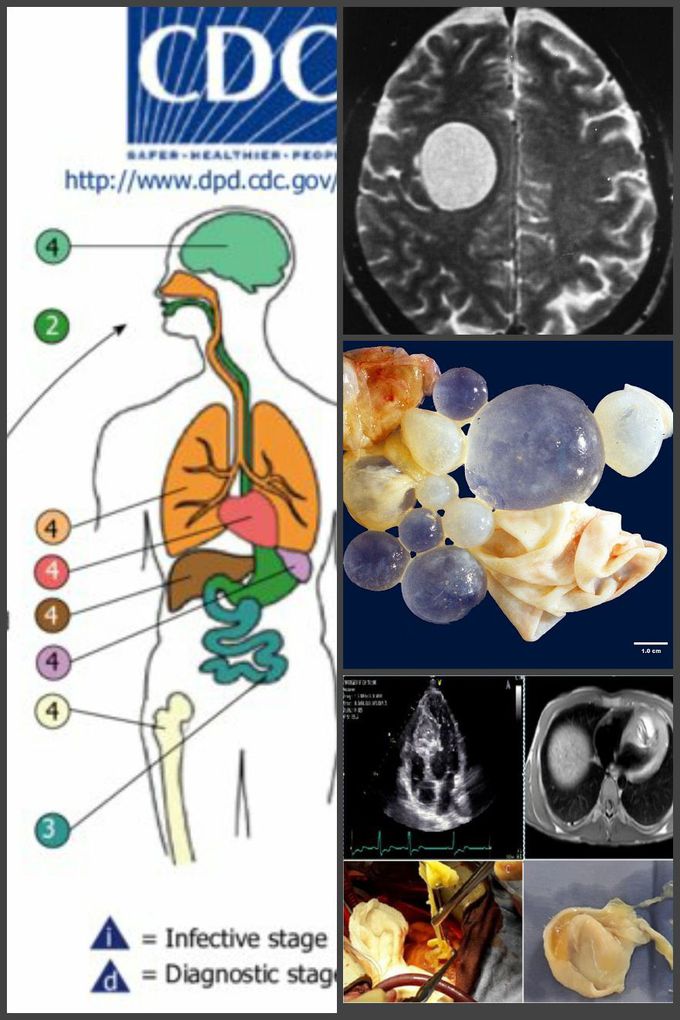


Echinococcus granulosus
Interestingly yet a very horrifying parasitic disease in the field of Parasitology. Echinococcus granulosus is a helminth parasite, which causes a zoonotic disease known as echinococcosis or hydatid disease. Generally, animals like dogs, cattles are typically the main hosts of it; however, people usually become intermediate host if eggs of E. granulosus have acquired through ingestion from the feces of the infected host. Clinically, Hydatid Disease is characterized by having multiple cysts cause by the larval stage of the Echinococcus granulosus and this cysts usually invaded liver, brain, heart, bones and more ( refer to the image provided; numbers have shown various organs that can potentially be infected by this particular tapeworm). Firstly, picture on the right shows you an MRI of a patient with a huge Hydatid cyst in the brain. Second picture is a gross anatomy of a liver showing evident multiple cysts. Lastly, third image is showing cyst invading the heart. Unfortunately, there are only limited studies that have conducted focusing on the components of the cyst but clinically, it is known to be very detrimental to human. PS: "ALWAYS wash your hands" that is the one of the golden rule that can prevent you from acquiring parasitic diseases/infections.

